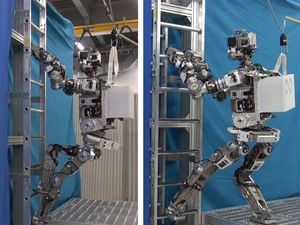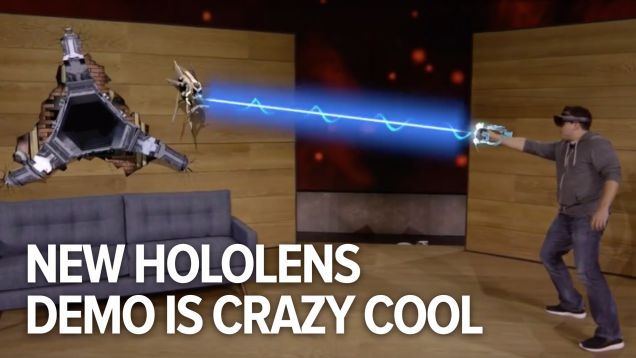A DNA-powered PC may not be on the horizon, but DNA can still compute even if it can’t build a computer.


A DNA-powered PC may not be on the horizon, but DNA can still compute even if it can’t build a computer.

Leave a human baby with some toys and it’ll quickly learn to pick them up. Now a robot with deep learning capabilities has done the same thing.

“Billionaire Elon Musk has a really compelling reason to ramp up NASA’s budget: We need to become a multi-planet species to ensure the survival of the human race, and we need NASA’s help to do it.”
Someone tell Congress.

Some people might find it enough reason to worry; others, enough reason to be upbeat about what we can achieve in computer science; all await the next chapters in artificial intelligence to see what more a machine can do to mimic human intelligence. We already saw what machines can do in arithmetic, chess and pattern recognition.
MIT Technology Review poses the bigger question: to what extent do these capabilities add up to the equivalent of human intelligence? Shedding some light on AI and humans, a team went ahead to subject an AI system to a standard IQ test given to humans.
Their paper describing their findings has been posted on arXiv. The team is from the University of Illinois at Chicago and an AI research group in Hungary. The AI system which they used is ConceptNet, an open-source project run by the MIT Common Sense Computing Initiative.

https://www.youtube.com/watch?v=29xnzxgCx6I/PLx1XbvvfIlc529HjUBHFmOAowGqoWnrdh
Well, this is it. The day all my dreams came true. I started out playing 2D side-scrollers in mall arcades in the 1980s, but I’ll soon be able to fight holographic robots bursting through my living room walls using my handheld blaster that’s a wearable hologram. WTF.
Today at Microsoft’s October 2015 event in New York, the team kicked off their new products announcement with a live HoloLens demonstration that pitted one headset-wearing Microsoft employee against arachnid alien bots crawling through a living room situation in what the company is calling “mixed reality gaming.” The demoed gameplay, codenamed Project X, allows you to defend any room in your home (or any other building) against encroaching alien invasion.

https://youtube.com/watch?v=C3rNIxMlKmI
Microsoft took time during today’s Windows 10 Devices event to give the audience a more in-depth look at what its new HoloLens AR system is capable of. Minds were blown, jaws were dropped and more than a few digital robots were blown to smithereens during the 8-minute demo.
The game is called Project X-Ray. Microsoft developed it in-house as an experiment in “mixed-reality entertainment” and involves using the HoloLens controller as a ray gun to blast digital enemies which emerge from the room’s walls. Running around your living room while wearing a $3,000 headset (what Microsoft is reportedly planning to charge developers) probably isn’t the safest of indoor activities, but dang this game looks insanely fun regardless.

Until recently, Facebook was reportedly looking into developing, launching and operating its own satellite. Anonymous sources revealed to The Information that Facebook pulled out of the project due to its rising costs, but was still considering moving forward with a leased satellite.
Google To Beam Internet From Balloons
The satellite is one facet of Zuckerberg’s Internet.org initiative, which aims to “make affordable access to basic Internet services available to every person in the world.”

The significant advance, by a team at the University of New South Wales (UNSW) in Sydney appears today in the international journal Nature.
“What we have is a game changer,” said team leader Andrew Dzurak, Scientia Professor and Director of the Australian National Fabrication Facility at UNSW.
“We’ve demonstrated a two-qubit logic gate — the central building block of a quantum computer — and, significantly, done it in silicon. Because we use essentially the same device technology as existing computer chips, we believe it will be much easier to manufacture a full-scale processor chip than for any of the leading designs, which rely on more exotic technologies.